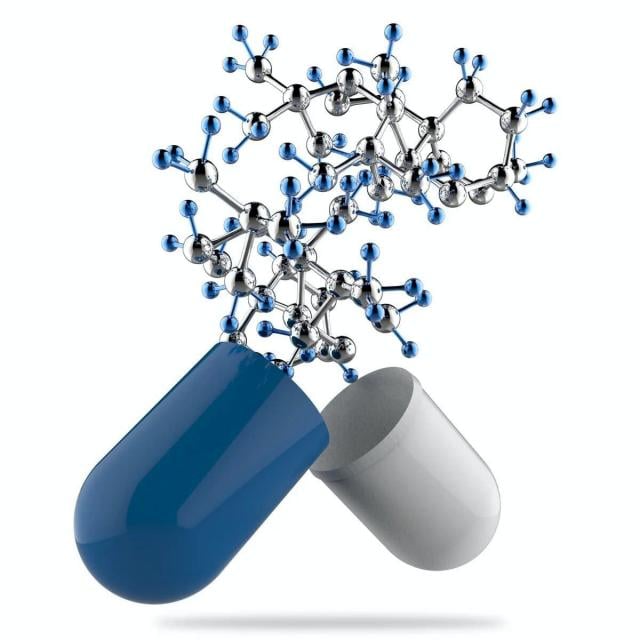MOOC List is learner-supported. When you buy through links on our site, we may earn an affiliate commission.

MOOC List is learner-supported. When you buy through links on our site, we may earn an affiliate commission.
The course is divided into 11 Modules covering the main questions of rational antibacterials’ use, pharmacodynamics, pharmacokinetics, indications, contraindications, adverse drug reactions of the main classes of natural antibiotic and synthetic agents, and parameters of their safety and use in specific population of patients.
The course is performed with multimedia enriched videos, complementary educational material, interactive links to the actual articles and guidelines according to each module, and online Quizzes.
The course “Pharmacology of antibacterial agents” is intended for students studying Medicine (including next specialties: General Medicine, Pharmacy, Dentistry, Pediatric), post-graduate students studying Clinical Pharmacology and clinicians who want to refresh knowledge on antibacterial agents’ pharmacology. Students of medical universities of 2nd year education and up.
Syllabus
WEEK 1
Introduction to the course of Pharmacology of antibacterial agents. Rational antibiotic therapy
Week 1 is “Introduction to the course of Pharmacology of antibacterial agents. Rational antibiotic therapy”, which is aimed on consideration of the actual problems of antibiotic use.
WEEK 2
Pharmacodynamics of antibacterial drugs
Week 2 is “Pharmacodynamics of antibacterial drugs”, highlighting the main mechanisms of antibacterial action, types of effects, general mechanisms of antibacterial resistance development and strategies to overcome it.
WEEK 3
Pharmacokinetics of antibacterial agents
Week 3 is “Pharmacokinetics of antibacterial agents”, dedicated to next parameters, absorption and bioavailability, distribution, and elimination, as well as to pharmacokinetic drug interactions.
WEEK 4
Beta-lactam antibiotics. Penicillins
Week 4 is “Beta-lactam antibiotics. Penicillins”, it includes the questions of beta-lactams classification with consideration of penicillins pharmacodynamic and pharmacokinetic parameters, indications, contraindications, adverse drug reactions including penicilliun-induced allergy, resistance mechanisms and ways to fight them.
WEEK 5
Beta-lactams. Cephalosporins. Carbapenems. Monobactams
Week 5 is “Beta-lactams. Cephalosporins. Carbapenems. Monobactams”, dedicated to the named groups of beta-lactam antibiotics and the actual parameters of their effective and safe use.
WEEK 6
Pharmacology of natural antibiotics
Week 6 is “Pharmacology of natural antibiotics”, covering the main pharmacologic characteristics and actual problems of effective and safe use of Tetracyclines, Aminoglycosides, Macrolides, Glycopeptides, Streptogramins, Lipopeptides, Lincosamides.
WEEK 7
Pharmacology of antibacterials of synthetic origin
Week 7 is “Pharmacology of antibacterials of synthetic origin”, dedicated to the main parameters of pharmacokinetics and pharmacodynamics, indications, contraindications, adverse drug reactions and safe use of Quinolones/Fluoroquinolones, Phenicols, and Oxazolidinones.
WEEK 8
Pharmacology of antibacterial drugs against Mycobacterium tuberculosis
Week 8 is “Pharmacology of antibacterial drugs against Mycobacterium tuberculosis”, which is aimed on providing information about pharmacologic characteristics of the first line antituberculosis agents and highlining the actual problems of their safe use.
WEEK 9
Antibacterial agents’ safety. Part I
Week 9 is “Antibacterial agents’ safety. Part I”, covering the actual problems of antibiotic-induced cardiotoxicity, nephrotoxicity, adverse drug effect involving skeletal muscles.
WEEK 10
Antibacterial agents’ safety. Part II
Week 10 is “Antibacterial agents’ safety. Part II”, which includes actual questions regarding antibiotic-associated neurotoxicity, gastrotoxicity, and hematotoxicity.
WEEK 11
Antibacterial agents use in special populations
Week 11 is “Antibacterial agents use in special populations”, highlining the main problems of safe and effective antibiotic use in pediatric practice, in elderly and geriatric patients, in hepatic or renal failure.
MOOC List is learner-supported. When you buy through links on our site, we may earn an affiliate commission.
MOOC List is learner-supported. When you buy through links on our site, we may earn an affiliate commission.
